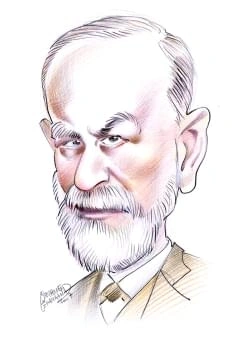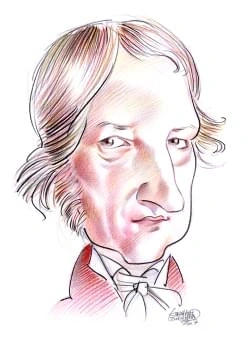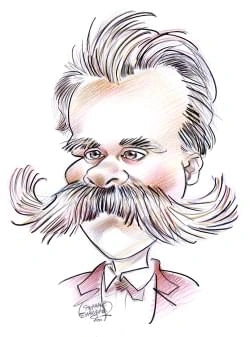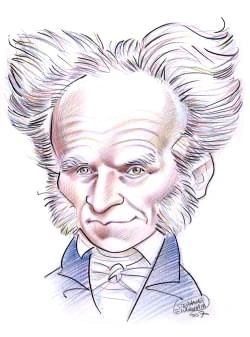439 résultats pour "largest"
-
Arizona - USA History.
of the Mogollon Rim, the Little Colorado draws very little water from a relatively large watershed, usually containing a mere trickle of water in its riverbed. The ColoradoRiver’s principal tributary is the Gila River, which flows all the way across the southern part of the state from New Mexico to the California border. From the mountainsand plateaus of central Arizona, the Gila River receives the Salt, Agua Fria, and Hassayampa rivers. The Salt River is itself fed by the Verde River. The Gila...
-
Kansas - geography.
at the adjoining cities of Kansas City, Kansas, and Kansas City, Missouri. Its chief headstreams are the Republican and Smoky Hill rivers, which join to form the KansasRiver at Junction City. Each of the headstreams has numerous tributaries. The Kansas River proper is only 270 km (170 mi) long, but the Smoky Hill River has a lengthof 870 km (540 mi), and the Republican River has a length of 720 km (450 mi). The main tributary flowing into the Kansas River is the Big Blue River. The Arkansas Rive...
-
Kansas - USA History.
at the adjoining cities of Kansas City, Kansas, and Kansas City, Missouri. Its chief headstreams are the Republican and Smoky Hill rivers, which join to form the KansasRiver at Junction City. Each of the headstreams has numerous tributaries. The Kansas River proper is only 270 km (170 mi) long, but the Smoky Hill River has a lengthof 870 km (540 mi), and the Republican River has a length of 720 km (450 mi). The main tributary flowing into the Kansas River is the Big Blue River. The Arkansas Rive...
-
Sri Lanka - country.
acacias, and orchids are found in many areas. The animal life of Sri Lanka includes 88 species of mammals, 21 of which are threatened with extinction. The Asian elephant, cheetah, leopard, and several species ofmonkey are endangered and officially protected. The island’s many species of primates include the long-tailed langur, toque macaque, and slender loris. Other mammalsinclude the sloth bear, several species of deer, mongoose, and wild boar. Reptiles are numerous, with 144 known species. Som...
-
South Dakota - geography.
C1 Temperatures Average January temperatures are everywhere less than -4° C (24° F) and decrease to less than -12° C (10° F) in some northern sections. The January temperaturesin Sioux Falls range from -16° to -4° C (3° to 24° F). Nightime lows of -29° C (-20° F) occur during most winters. July averages are in the low and middle 20°s C (lowand middle 70°s F) throughout most of the state, and are somewhat lower in the Black Hills. The average temperature range in Sioux Falls in July is 17° to 30...
-
South Dakota - USA History.
C1 Temperatures Average January temperatures are everywhere less than -4° C (24° F) and decrease to less than -12° C (10° F) in some northern sections. The January temperaturesin Sioux Falls range from -16° to -4° C (3° to 24° F). Nightime lows of -29° C (-20° F) occur during most winters. July averages are in the low and middle 20°s C (lowand middle 70°s F) throughout most of the state, and are somewhat lower in the Black Hills. The average temperature range in Sioux Falls in July is 17° to 30...
-
Maryland - geography.
Maryland has no large natural lakes. The largest body of water is a reservoir, Deep Creek Lake, which has a surface area of only 18 sq km (7 sq mi). It lies on theAllegheny Plateau, behind a dam on a tributary of the Youghiogheny River. C Coastline The deeply indented shoreline has a length of 5,134 km (3,190 mi), of which only 50 km (31 miles) fronts on the Atlantic Ocean. The most significant coastal feature isChesapeake Bay. In the bay are many islands and Kent Island is the largest. The sta...
-
Maryland - USA History.
Maryland has no large natural lakes. The largest body of water is a reservoir, Deep Creek Lake, which has a surface area of only 18 sq km (7 sq mi). It lies on theAllegheny Plateau, behind a dam on a tributary of the Youghiogheny River. C Coastline The deeply indented shoreline has a length of 5,134 km (3,190 mi), of which only 50 km (31 miles) fronts on the Atlantic Ocean. The most significant coastal feature isChesapeake Bay. In the bay are many islands and Kent Island is the largest. The sta...
-
-
Pennsylvania - geography.
B Rivers and Lakes There are three major river basins in Pennsylvania: the Susquehanna, the Ohio, and the Delaware. Together they drain more than 90 percent of Pennsylvania’s landarea. Most of eastern and central Pennsylvania is drained by the Susquehanna and Delaware systems. The western part of the state is drained by the Allegheny andMonongahela rivers, which join at Pittsburgh to form the Ohio. In addition to the three major river basins, short streams flowing into Lake Erie drain the north...
-
Pennsylvania - USA History.
B Rivers and Lakes There are three major river basins in Pennsylvania: the Susquehanna, the Ohio, and the Delaware. Together they drain more than 90 percent of Pennsylvania’s landarea. Most of eastern and central Pennsylvania is drained by the Susquehanna and Delaware systems. The western part of the state is drained by the Allegheny andMonongahela rivers, which join at Pittsburgh to form the Ohio. In addition to the three major river basins, short streams flowing into Lake Erie drain the north...
-
Australia - country.
itself forms most of the border between New South Wales and Victoria. Considerable lengths of the Murray, Darling, and Murrumbidgee rivers are navigable during thewet seasons. The central plains region, also known as the Channel Country, is interlaced by a network of rivers. During the rainy season these rivers flood the low-lying countryside,but in dry months they become merely a series of water holes. The Victoria, Daly, and Roper rivers drain a section of the Northern Territory. In Queensland...
-
Australia - Geography.
itself forms most of the border between New South Wales and Victoria. Considerable lengths of the Murray, Darling, and Murrumbidgee rivers are navigable during thewet seasons. The central plains region, also known as the Channel Country, is interlaced by a network of rivers. During the rainy season these rivers flood the low-lying countryside,but in dry months they become merely a series of water holes. The Victoria, Daly, and Roper rivers drain a section of the Northern Territory. In Queensland...
-
Canada.
Six general landform regions are distinguishable in Canada: the Appalachian Region, the Great Lakes and St. Lawrence Lowlands, the Canadian Shield, the Great Plains,the Canadian Cordillera, and the Canadian Arctic Archipelago. B1 Appalachian Region and Great Lakes and St. Lawrence Lowlands Eastern Canada consists of the Appalachian Region and the Great Lakes and St. Lawrence Lowlands. The Appalachian Region embraces Newfoundland Island, NovaScotia, New Brunswick, Prince Edward Island, and the G...
-
Canada - country.
Six general landform regions are distinguishable in Canada: the Appalachian Region, the Great Lakes and St. Lawrence Lowlands, the Canadian Shield, the Great Plains,the Canadian Cordillera, and the Canadian Arctic Archipelago. B1 Appalachian Region and Great Lakes and St. Lawrence Lowlands Eastern Canada consists of the Appalachian Region and the Great Lakes and St. Lawrence Lowlands. The Appalachian Region embraces Newfoundland Island, NovaScotia, New Brunswick, Prince Edward Island, and the G...
-
Canada - Canadian History.
Six general landform regions are distinguishable in Canada: the Appalachian Region, the Great Lakes and St. Lawrence Lowlands, the Canadian Shield, the Great Plains,the Canadian Cordillera, and the Canadian Arctic Archipelago. B1 Appalachian Region and Great Lakes and St. Lawrence Lowlands Eastern Canada consists of the Appalachian Region and the Great Lakes and St. Lawrence Lowlands. The Appalachian Region embraces Newfoundland Island, NovaScotia, New Brunswick, Prince Edward Island, and the G...
-
Nova Scotia - Geography.
summer. Nova Scotia receives an average of more than 1,140 mm (45 in) of rain annually, with the Atlantic shore receiving 1,400 mm (55 in) or more. Most of the provincereceives about 1,900 mm (about 70 in) of snow, and considerable winter precipitation comes in the form of rain or ice storms. The average temperature in January, thecoldest month, is generally about -4°C (about 25°F) near the coast and somewhat colder toward the interior. The average temperature in July, the hottest month, isabout...
-
-
Nova Scotia - Canadian History.
summer. Nova Scotia receives an average of more than 1,140 mm (45 in) of rain annually, with the Atlantic shore receiving 1,400 mm (55 in) or more. Most of the provincereceives about 1,900 mm (about 70 in) of snow, and considerable winter precipitation comes in the form of rain or ice storms. The average temperature in January, thecoldest month, is generally about -4°C (about 25°F) near the coast and somewhat colder toward the interior. The average temperature in July, the hottest month, isabout...
-
Afghanistan - country.
D Climate Most of Afghanistan has a subarctic mountain climate with dry and cold winters, except for the lowlands, which have arid and semiarid climates. In the mountains and afew of the valleys bordering Pakistan, a fringe effect of the Indian monsoon, coming usually from the southeast, brings moist maritime tropical air in summer.Afghanistan has clearly defined seasons: Summers are hot and winters can be bitterly cold. Summer temperatures as high as 49°C (120°F) have been recorded in thenorth...
-
Asia - Geography.
Borneo, the world’s third largest island after Greenland and New Guinea. To the southeast is the Timor Sea separating the Asian island of Timor from the Australiancontinent. The Indian subcontinent is flanked by the Bay of Bengal on the east and the Arabian Sea on the west. The island of Sri Lanka and the much smaller Maldives andNicobar Islands trail away to the south. The Arabian Sea’s Gulf of Aden, the Red Sea, the Mediterranean Sea, and the Black Sea form an arc along the western rim of Asia...
-
Asia - History.
Borneo, the world’s third largest island after Greenland and New Guinea. To the southeast is the Timor Sea separating the Asian island of Timor from the Australiancontinent. The Indian subcontinent is flanked by the Bay of Bengal on the east and the Arabian Sea on the west. The island of Sri Lanka and the much smaller Maldives andNicobar Islands trail away to the south. The Arabian Sea’s Gulf of Aden, the Red Sea, the Mediterranean Sea, and the Black Sea form an arc along the western rim of Asia...
-
Turkey - country.
has a general elevation of 900 to 1,500 m (3,000 to 5,000 ft) above sea level. The eastern highlands region is the most mountainous and rugged portion of Turkey; Mount Ararat (Ağrı Da ğı) is the highest peak in the country at 5,165 m (16,945ft). Many Christians and Jews believe it to be the same Mount Ararat mentioned in the Bible as the place where Noah’s ark came to rest. The eastern highlands are thesource for both the Tigris (Dicle) and Euphrates (Fir āt)—two of southwestern Asia’s principal...
-
Kazakhstan - country.
mismanagement. Between 1949 and 1991 the Soviet government conducted about 70 percent of all of its nuclear testing in Kazakhstan, mostly in the northeastern area near the city ofSemipalatinsk (now Semey). Nearly 500 nuclear explosions occurred both above and below ground near Semipalatinsk, while more than 40 nuclear detonationsoccurred at other testing grounds in western Kazakhstan and in the Qyzylqum desert. More than 1 million of Kazakhstan’s inhabitants were exposed to dangerous levelsof ra...
-
Israel (country) - country.
harbor in the northern part of the country, and Ashdod, an artificial deepwater port to the south, serve as the main seaports on the Mediterranean. The port of Elat onthe Gulf of Aqaba provides Israel’s only access to the Red Sea, making it extremely important to the country’s shipping interests. D Natural Resources Although much of Israel’s desert regions contain poor soils, the northern Negev, the coastal plains, and the interior valleys provide patches of productive soils. Anestimated 18 per...
-
Boston - geography.
The neighborhoods of Allston and Brighton occupy the northwest corner of the city to the west of Fenway. The Allston-Brighton area is bordered to the east, north, andwest by the Charles River and to the south by the Massachusetts Turnpike and the town of Brookline. It is an industrial and residential neighborhood that is also thelocation of Boston College and Harvard University Business School. Boston has been unsuccessful in annexing Brookline, the birthplace of U.S. president John F.Kennedy an...
-
-
France - country.
In both the Paris and Aquitaine basins, fertile soils derived from limestone and wind-deposited dust, called loess, have supported prosperous agriculture since ancienttimes. Other lowlands in France are scattered and relatively small. They include the Alsace Plain in the east, bordering Germany, the valley of the Rhône River in thesoutheast, and the Languedoc Plain along the Mediterranean coast. A2 Uplands France contains several regions of uplands, the worn down remains of ancient mountain sys...
-
South Korea - country.
forest habitat, and overhunting. The Siberian tiger has not been sighted in the wild in South Korea since the 1920s; the Asiatic black bear can still be found in someremote mountain areas. Several species of deer are indigenous to the peninsula, including the roe deer, water deer, and Siberian musk deer. The musk deer, which hasbeen overhunted for its musk glands, is legally protected as a threatened species. Smaller mammals indigenous to the peninsula include the wild boar, red fox, badger,rabb...
-
United Kingdom - country.
B Natural Regions and Topography The island of Great Britain can be divided into two major natural regions—the highland zone and the lowland zone. The highland zone is an area of high hills andmountains in the north and west. The lowland zone in the south and east consists mostly of rolling plains. The zones are divided by an imaginary line running throughEngland from the River Exe on the southwest coast to the mouth of the River Tees on the northeast coast. The lowland zone has a milder climat...
-
Taxation.
Thus, corporate income faces a higher tax burden than income earned by individuals or by other types of businesses. Tax legislation passed in 2003 in the United Statesattempted to address this issue by lowering the tax rate on dividends. Some economists have proposed abolishing the corporate income tax and instead taxing the owners of corporations (shareholders) through the personal income tax.Other students of the tax system see the corporate income tax as the price corporations pay in return f...
-
Cincinnati - geography.
and managed the Reds. The University of Cincinnati men’s basketball team enjoyed considerable success in the 1990s. IV ECONOMY Cincinnati, from its earliest beginnings, has functioned as a major port on the Ohio River. Distribution of raw materials as well as manufactured goods is one of the city’schief economic activities. Although Cincinnati remains one of the world’s leading centers for the distribution of bituminous (soft) coal, this trade is gradually declining. Coal from Kentucky and W...
-
Democratic Republic of the Congo - country.
Except in the high elevations, the country’s climate is very hot and humid. The average annual temperature in the low central area is about 27°C (about 80°F).Temperatures are considerably higher in February, the hottest month. At altitudes above about 1,500 m (about 5,000 ft) the average annual temperature is about 19°C(about 66°F). Average annual rainfall is about 1,500 mm (about 60 in) in the north and about 1,300 mm (about 50 in) in the south. Frequent heavy rains occur fromApril to November...
-
Saudi Arabia - country.
C Natural Resources Some of the world’s largest oil and natural gas fields lie beneath Saudi Arabia and its offshore waters, representing the country’s most economically important naturalresource. In 2007 Saudi Arabia’s oil reserves were estimated at 264 billion barrels. Before the discovery and exploitation of these reserves in the mid-20th century,Saudi Arabia was one of the poorest countries in the world. Its relatively small population subsisted in a harsh environment with little agricultur...
-
Iraq - country.
The Euphrates begins in Turkey, crosses Syria, and enters Iraq at Abū Kam āl. The flow of the Euphrates into Iraq has been greatly reduced by dams built by Turkeyand Syria. The gradient of the Euphrates above the town of H īt, in west central Iraq, is steep. In the 2,640 km (1,640 mi) from its source in Turkey to H īt, the river fallsfrom 3,000 m (10,000 ft) to a low water elevation of 50 m (170 ft) above sea level, an average drop of 1 m per km (6 ft per mi). In Iraq below H īt the fall is very...
-
-
Detroit - geography.
of German and Irish immigrants. In the first half of the 20th century, the percentage of foreign-born residents declined, even though many immigrants arrived fromeastern Europe. During World War II (1939-1945), both whites and blacks were attracted from the South to work in the city’s defense industries. In 1950 foreign-bornand black residents each made up about 16 percent of the total population. In the five decades after 1950, the city lost almost half of its population, as many white resident...
-
Tajikistan - country.
by more than 100 percent due to a high birth rate and improvements in medical care. During the early 1990s, however, the growth rate began to decline due to civilwar and emigration. A Ethnic Groups and Languages Tajiks constitute the largest ethnic group in Tajikistan, making up about 65 percent of the population. The peoples who live in Gorno-Badakhshan, located in the Pamirs,are classified as Tajiks, although their languages and customs are distinct. The largest minority group in the country...
-
Berlin - geography.
boroughs of Wedding and Tiergarten. Other important central areas include Kreuzberg and Friedrichshain, now united as the Friedrichshain-Kreuzberg borough, andPrenzlauer Berg, now incorporated as a part of the Pankow borough. Tiergarten contains a large wooded park, a zoo, and a variety of public monuments as well as the large, modern Congress Hall and the Reichstag building, which wasbuilt from 1884 to 1894. The Reichstag and the surrounding area have undergone renovation to accommodate the Bun...
-
Mexico City - geography.
The park houses some of Mexico's most important public buildings, including Chapultepec Castle. Construction of the castle began in 1783. Positioned on the park’shighest elevation, the castle functioned as a fortress during colonial times. It once served as the presidential residence and now houses the National Museum of History,which includes murals by 20th-century Mexican painter Juan O'Gorman. Los Pinos, the official residence and working offices of the president, is also on the grounds, buti...
-
Albania - country.
Joining the international community in its concern over the degradation of the environment, Albania is party to international agreements concerning biodiversity, climatechange, and wetlands. III THE PEOPLE OF ALBANIA In 2008 Albania’s population estimate was 3,619,778, resulting in an average density of 132 persons per sq km (342 per sq mi). More and more people have left ruralareas for urban ones, particularly in the northern districts, such that in 2005 some 45 percent of the population live...
-
Columbus (Ohio) - geography.
A balance among manufacturing, technology, research, and financial activities has helped Columbus’s economy to continue to boom. Much of the city’s expansion resultsfrom its function as a sophisticated service center. By 1990 manufacturing occupied only 12 percent of the area’s labor force. That contrasted with services, includinggovernment, finance, and transportation and utilities, which accounted for almost 60 percent of all employment. The two largest employers in Columbus are state governme...
-
River.
IV RIVER PATTERNS River patterns, or general shapes, depend on the geologic zone and the climate of the location. There are four river patterns: meandering, braided, anastomosing, andstraight. A meandering pattern follows a winding, turning course. A braided pattern has connected channels that resemble a hair braid. An anastomosing river patterncombines features of the meandering and braided patterns. Some river patterns are simply straight channels. Meandering and braided are the most common...
-
River - Geography.
IV RIVER PATTERNS River patterns, or general shapes, depend on the geologic zone and the climate of the location. There are four river patterns: meandering, braided, anastomosing, andstraight. A meandering pattern follows a winding, turning course. A braided pattern has connected channels that resemble a hair braid. An anastomosing river patterncombines features of the meandering and braided patterns. Some river patterns are simply straight channels. Meandering and braided are the most common...
-
-
Estonia - country.
protest the expansion of open-pit phosphorite mining in northeastern Estonia. Their success in stopping the expansion prompted further demonstrations as part of thecountry’s independence movement. Since independence Estonia has taken measures to protect the environment. The government has ratified international agreementsto reduce emissions of hazardous wastes and greenhouse gases, as well as to protect biodiversity, wetlands, and endangered species. Estonians cherish thecountryside, and 31 perc...
-
Finland - country.
Productive forestland is the most valuable natural resource of Finland. Spruce, pine, and silver birch are the principal trees used to manufacture wood and pulp andpaper products. Finland lacks coal and petroleum resources and is a net importer of energy resources. However, Finland does have significant deposits of peat, which is cut from thenumerous peat bogs that cover much of the north. Peat is an important heat source for homes, and it provides about 7 percent of Finland’s electricity needs....
-
Hungary - country.
Northern Hungary lacks sufficient water, especially between July and October, when precipitation levels are typically low. Canals irrigate the Great Hungarian Plain,which is subject to drought. Because of the country’s mainly flat terrain, only limited water resources can be harnessed for hydroelectric power. F Environmental Issues Rapid industrialization in Hungary following World War II contributed significantly to a number of major environmental problems, including air, water, and soil pollu...
-
Houston - geography.
Prominent historical and cultural institutions include the Civic Center Complex, located in the central business district. The complex is composed of the George R. BrownConvention Center; the Wortham Center, which is the home of the Houston Grand Opera and the Houston Ballet; and the Jesse H. Jones Hall for Performing Arts, whichis the home of the Houston Symphony. The nearby Alley Theatre houses a professional repertory acting company. Among other local professional performance groupsare the Ma...
-
Botswana - country.
at birth was 50.2 years, also a significant improvement. The urban population of Botswana has increased rapidly, from 18 percent of the total in 1981 to 51 percent in 2003. Gaborone, the capital, is the largest city and mainbusiness center. Other business centers are Francistown, Selebi-Pikwe, Molepolole, Kanye, and Serowe. Botswana received its name from the country’s principal ethnic group, the Tswana. Other ethnic groups include the Kgalagadi, Kalanga, and Basarwa. There are also asmall numbe...
-
United Arab Emirates - country.
III PEOPLE Most people living in the UAE (known as Emiris) are Arabs, a large majority of whom are city and town dwellers. A small number are nomadic (having no permanent home). The population has grown dramatically since the mid-1960s, largely due to the influx of oil workers to the country. Four-fifths of the UAE’s inhabitants areforeign workers and their families. The UAE also has a very youthful population, due to the large numbers of young foreign workers, a cultural preference for larg...
-
Jupiter (planet) - astronomy.
Beneath the supercritical fluid zone, the pressure reaches 3 million Earth atmospheres. At this depth, the atoms collide so frequently and violently that the hydrogenatoms are ionized—that is, the negatively charged electrons are stripped away from the positively charged protons of the hydrogen nuclei. This ionization results in asea of electrically charged particles that resembles a liquid metal and gives rise to Jupiter’s magnetic field. This liquid metallic hydrogen zone is 30,000 to 40,000 k...
-
Ecuador - country.
F Natural Resources Ecuador’s main mineral wealth is in petroleum. Other mineral resources of the country include gold, silver, copper, lead, and zinc. Forests cover 38.3 percent of thecountry. G Plants and Animals Along the northern part of the Ecuador coast, and within the inner portion of the southern coast, tropical jungles abound. In some places the jungles extend up theslopes of the Andes as wet, mossy forests. Dense forests cover both flanks of the Cordilleras, as well as the Oriente, u...
-
-
Toronto - geography.
to arrive in the Toronto CMA, most conspicuously from Hong Kong. People of Chinese origin accounted for over 9 percent of the city’s population at the 2001 census.Foreign-born residents constitute 44 percent of the population, the highest metropolitan percentage on the North American continent. The ethnic breakdown of metropolitanToronto in the 2001 census included Canadian, 18.5 percent; English, 16.9 percent; Scottish, 11.1 percent; Irish, 10.5 percent; Chinese, 9.4 percent; Italian, 9.2 perce...
-
Phoenix (city, Arizona) - geography.
The company’s irrigation system followed the network of canals that were built there by the Hohokam some 500 years earlier. In October 1870, several settlers foundedthe site of modern Phoenix. In recognition of the former Hohokam culture, settler Darrell Duppa likened the new community to the phoenix, a mythological bird thatconsumed itself by fire every 500 years and arose anew from the ashes. Thereafter, the group adopted Phoenix as the settlement’s name. Within a short time the areawas produc...
}})








